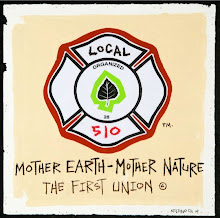Tibet Unrest Puts Tourism on Hold
In the wake of recent uprisings by Tibetans, the Chinese government has effectively shut down most tourism in Tibet.
By James Areddy, The Wall Street Journal
The prefecture of (Aba) Ngawa, located in China's Sichuan province, beckons visitors with the slogan "the hometown of panda." But these days, instead of the famously elusive black-and-white bears, the region's most hidden population may be its Tibetan community.
To visit (Aba) Ngawa is to come face-to-face with Beijing's tight grip on its Tibetan citizens, wherever they are. Beijing forbids outsiders to get near (Aba) Ngawa's hot spots, such as Kirti Monastery, Tibetan Buddhism's largest, with 3,000 monks. But pockets of the region remain accessible — including other touristy areas, back-country horse trails and Tibetan villages — and offer a glimpse of how Beijing's policies in the region are raising tensions with some ethnic Tibetans and generating support from others.
(Aba) Ngawa illustrates how the nation's toughest clampdown on dissent in years pushes far beyond Lhasa, 1,400 kilometers westward, where anti-China rioting started on March 14. Now, chunks of five Chinese provinces are cordoned off to most visitors. A heavy paramilitary police presence has left parts of Sichuan province under virtual martial law, including the heart of the lush region known officially as the Aba Tibetan and Qiang Minority Autonomous Prefecture.
Much like Tibet itself, (Aba) Ngawa is a sparsely populated, high-altitude region of rich forests, wooly yaks and golden-tipped Buddhist monasteries. Year-round, millions of tourists are drawn to the emerald-colored lakes and snow-capped peaks at a Unesco World Heritage Site in the area called Jiuzhaigou, which boasts the possibility — however rare — of spotting a panda in the wild.
Airplanes bound for Aba descend dramatically onto one of the world's highest-altitude runways, a plateau located 3½ kilometers above sea level and ringed by craggy mountains sprouting colorful Tibetan prayer flags. The airport terminal has an oxygen bar to help travelers overcome dizziness.
Yet, once visitors adjust to the intense sun and stunning scenery, the Chinese government's view of (Aba) Ngawa as a volatile place comes into stark view. Riot police wearing green fatigues and carrying plastic shields march through the airport and hold drills on its perimeter. On some stretches of highway, authorities search nearly every vehicle, including the dwindling number of tour buses that once represented (Aba) Ngawa's economic backbone.
The anxiety can discomfort visitors.
"A lot of American tourists traveling to China for the first time might be a bit taken aback," says 24-year-old Atlantan Eli Sweet. During a visit last week, he says, his parents were particularly unnerved by passport checks and probes into the trunk of their hired car by armed police.
No doubt (Aba) Ngawa is a flashpoint in the current crisis. Police seized guns, bullets, swords and explosives from Kirti Monastery, China's official Xinhua news agency reported last month. And last week, police fired on a crowd of rioters near another monastery in the area, Xinhua reported. (Aba) Ngawa and elsewhere in Sichuan account for the largest number of the about 50 locations in China where pro-Tibet demonstrations have taken place, according to tallies by human-rights groups.
Among Beijing's responses has been to lock out visitors from minority areas that form around half of Sichuan, plus parts of Qinghai, Gansu and Yunnan provinces that are also Tibetan homelands.
"For safety concern, foreigners and foreign media need to follow relevant regulations of China. We neither want to restrict media coverage nor have we anything to cover up," the chairman of the Tibet Autonomous Region government, Qiangba Puncog, told a news conference Wednesday in Beijing.
Since the unrest began, various Tibetan regions have been off-limits to reporters except on government-organized tours, including one Wednesday where news organizations visited Labrang Monastery in Xiahe, Gansu province. The visit for Chinese and foreign reporters was briefly interrupted by protesting monks carrying a banned Tibetan flag and calling for the return of the Dalai Lama, similar to an episode last month in Lhasa, the Reuters news agency said.
That style of control was once unique to Tibet.
Until the recent unrest, Tibet itself had been opening up. Encouraged by a two-year-old train line into Lhasa, a record four million tourists visited Tibet last year, including 365,000 foreigners. "There was incredible demand for tourism to Tibet," says Jeanette Neudert, U.K.-based tourism giant TUI Travel PLC's marketing director in China, who has seen a wave of cancellations.
Now Tibet is closed.
But to keep tourism dollars flowing and to offer visitors an alternative Tibetan destination at least until Tibet reopens, which the region's Bureau of Tourism says is planned for May 1, China has continued to allow visitors into portions of eastern (Aba) Ngawa, including Jiuzhaigou. Still, empty hotels, frustrated taxi drivers and the extraordinary solitude at Jiuzhaigou's famous waterfalls testify to how widely the crackdown is being felt by a tourism industry that trades on the Tibetan mystique. One recent evening, an Air China Airbus-319 that can hold more than 120 passengers took off from Jiuzhaigou's airport with just 32 people aboard, including the crew.
Other key spots in (Aba) Ngawa, including China's famed panda-research center, Wolong National Nature Reserve, remain open, but tour operators say visitors should expect police roadblocks and passport checks along the way. Monasteries in (Aba) Ngawa can feel unnaturally lifeless, including Gami Temple, which has a police station at its entrance and where the only person eager to talk on a recent day was a 14-year-old monk who wanted money "to buy a pen."
Robert Barnett, director of the modern Tibetan studies center at Columbia University in New York, says Beijing has long been anxious about the (Aba) Ngawa region, which he says may be due to a deep devotion within the Kirti Monastery to the Tibetan spiritual leader the Dalai Lama, rather than the Communist Party in Beijing. Mr. Barnett says Aba, which is known as Ngawa in Tibetan, remained off limits to tourists long after they were permitted to first visit other parts of China, including Tibet, through the 1980s and 1990s. "It was the last holdout," he says.
The controls are back. It proves fruitless to drive toward Kirti and the rest of the Buddhist heartland of (Aba) Ngawa on Highway 213, a key north-south artery in Sichuan province. At a junction to the highway near the airport, a police officer checks the car's trunk before dismissing a request to drive through by uttering a single-word reason: "laowai," or foreigner.
On a more-touristy route 50 kilometers north, the car is waved to the side of the road by a portly policeman wearing a pistol on his hip and a red light on his bullet-proof vest. Telephone calls are made as an American reporter's passport, which includes a foreign journalist visa, is scrutinized for 10 minutes, prompting just one question from the officer before the car is permitted to proceed: "what is your name, your Chinese name?"
A newly built mountain pass further north offers a possible route toward Kirti. But traffic police manning a checkpoint refuse entry, as one explains in halting English "the road bad" and in Chinese that the sedan is ill-equipped to traverse the snowy conditions. Despite turning the car around, the officers insist on making note of the reporter's passport details but don't mention its journalist-visa stamp — perhaps because restricting movement of foreign reporters is out of sync with Beijing's Olympics-related pledge to allow them unfettered access this year.
In the ethnically diverse trading town of Songpan, police cars pass through the gates of its 600-year-old wall far more these days than busses shuttling tourists, a reminder of how Songpan was a garrison town during the Tang Dynasty. One ethnic-Chinese restaurant owner says the government's tight grip has cost her "90%, if not 98%" of her business and, "Our worst fear is it will last until after the Olympics."
A horseback ride into pastoral (Aba) Ngawa offers a peek at how China's fast modernization is reaching some remote Tibetan communities — places that haven't experienced unrest. In the valley town of Bao Zuo, workmen are standing in mud installing new telephone lines, while a resident in adjacent Mu Ni Xiang turns heads with his newly purchased moped. Still, the massive stacks of hand-cut wood for cooking and heat that encircle houses in the area, plus the yaks and sheep, are a reminder of how disparate rural China, where Tibetans and other ethnic minorities tend to live, is compared with urban areas that are dominated by the nation's dominant ethnic group, Hans.
Inside the 400-person Tibetan hamlet of Shi Ba Village, controls are tight. One minute after a visitor crosses a small bridge into Shi Ba, a village watchman scurries over with a pad of paper to register passport details. And within a half hour, the village chief, Ze Wang, arrives to outline rules for an overnight stay, including avoiding the local monasteries after dark, promising not to explore the town's single dirt path alone and pledging to depart early in the morning.
Shi Ba, which translates as Stone Dam, is an agrarian community that appears far wealthier than many places in Tibet proper: food, a mix of Chinese steamed buns and red Tibetan yak-butter tea, is plentiful, and satellite dishes stick out from many houses, even though water is still drawn from a well and the electricity fails just after dark.
Through the evening, Tibetan farmers gather in one resident's living room, which doubles as a tavern. They warm themselves in front of a wood-fired stove and buy clear liquor by the shot glass, sticking to light conversation with an outsider such as whether watching basketball during the Beijing Olympics will be better in person or on television. Questions about rioting in Lhasa are dismissed with puzzled looks.
But even in Shi Ba there is the hint of discord. At one of the town's two monasteries, a monk appears to take a gentle political jab at the Communist Party's involvement in monastic affairs. He nods toward the hard-to-miss Chinese flag at the monastery entrance and asks with a wink "see the red flag?"
One Tibetan employed in (Aba) Ngawa's now-sagging tourism business says Chinese authorities are wary of outsiders due to fears they may be helping the Dalai Lama fan dissent. "They think you are part of the Dalai clique," he says.
Sunday, April 13, 2008
Clampdown on Tibet Squeezes Tourist Destinations
Posted by
la fin du siècle
at
1:46 PM
![]()
Labels: China Olympics, human rights, Tibet
Subscribe to:
Post Comments (Atom)





























No comments:
Post a Comment